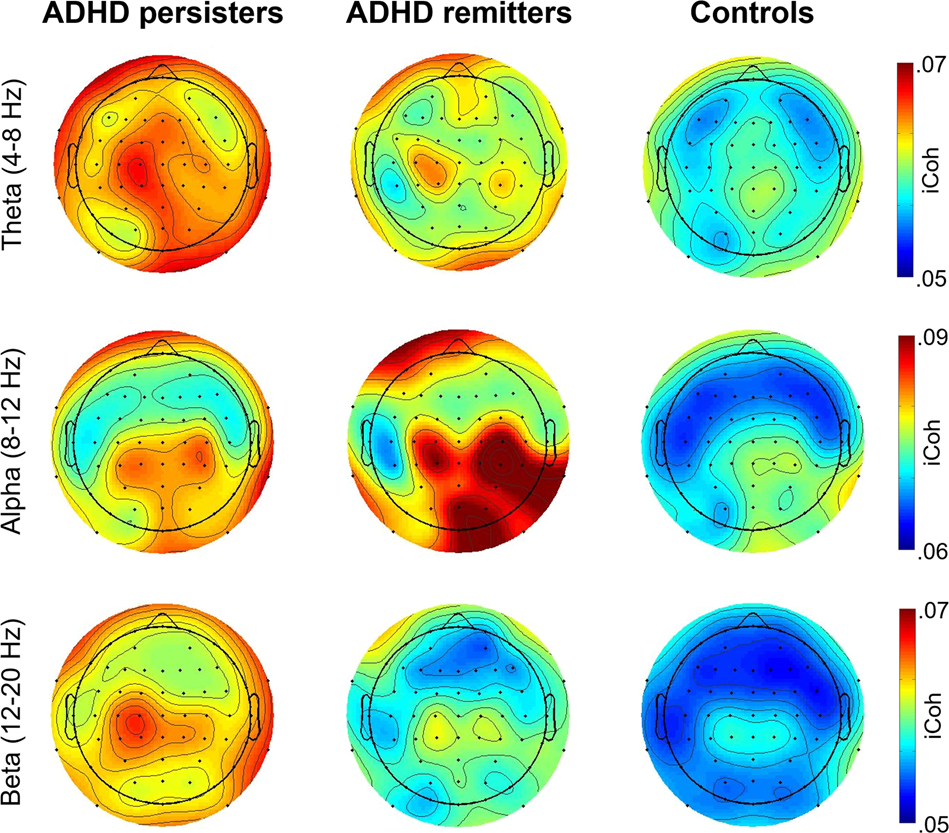

Attention Deficit Hyperactivity Disorder is not only the most common of the childhood psychiatric disorders but also the best researched disorder (Rowland, Lesesne, & Abramowitz, 2002).
Eeg adhd manual#
Currently, the disorder is primarily diagnosed by referring to the criteria of the Diagnostic and Statistical Manual of Mental Disorders-Fourth Edition Text Revision (DSM-IV, 1994) or the International Statistical Classification of Mental Disorders (ICD-10, World Health Organization, 1992). In 40-60% of all cases ADHD persists in adolescence and adulthood (Faraone, Biederman & Mick, 2006). The general rate of prevalence is reported between 3% to 7% of school age children (Cormier, 2008). However, more work needs to be done to increase the reliability of the taken approach.History of Neurophysiological findings in ADHDĪttention-Deficit/Hyperactivity Disorder (ADHD) has become one of the most common neurodevelopmental and psychiatric disorders of childhood.

The results show that the applied method reflects a promising means to support clinical diagnosis in ADHD. This is the first study showing that deep learning methods applied to EEG data are able to dissociate between ADHD patients and healthy controls. Using the applied deep learning method, it was not possible to distinguish ADHD subtypes from each other. It is shown that neurophysiological processes indicating attentional selection associated with superior parietal cortical areas were the most important for that. However, a significant fraction of individuals could not be classified correctly. The results show that the applied deep learning model (“EEGNet”) was able to distinguish between both ADHD subtypes and healthy controls with an accuracy of up to 83%. The same was done to distinguish between ADHD subtypes. In the current study, we applied deep learning methods on event-related EEG data to examine whether it is possible to distinguish ADHD patients from healthy controls using purely neurophysiological measures.

Much research effort has been undertaken to evaluate the usefulness of neurophysiological (EEG) data to aid this diagnostic process. Amirali Vahid Cognitive Neurophysiology, Department of Child and Adolescent Psychiatry, Faculty of Medicine, TU Dresden, Fetscherstrasse 74, 01309 Dresden, Germany Annet Bluschke Cognitive Neurophysiology, Department of Child and Adolescent Psychiatry, Faculty of Medicine, TU Dresden, Fetscherstrasse 74, 01309 Dresden, Germany Veit Roessner Cognitive Neurophysiology, Department of Child and Adolescent Psychiatry, Faculty of Medicine, TU Dresden, Fetscherstrasse 74, 01309 Dresden, Germany Sebastian Stober Artificial Intelligence Lab, Institute for Intelligent Cooperating Systems, Faculty of Computer Science, Otto von Guericke University Magdeburg, Universitätsplatz 2, 39106 Magdeburg, Germany Christian Beste Cognitive Neurophysiology, Department of Child and Adolescent Psychiatry, Faculty of Medicine, TU Dresden, Fetscherstrasse 74, 01309 Dresden, Germany DOI Journal volume & issueĪttention Deficit Hyperactivity Disorder (ADHD) is one of the most prevalent neuropsychiatric disorders in childhood and adolescence and its diagnosis is based on clinical interviews, symptom questionnaires, and neuropsychological testing.


 0 kommentar(er)
0 kommentar(er)
